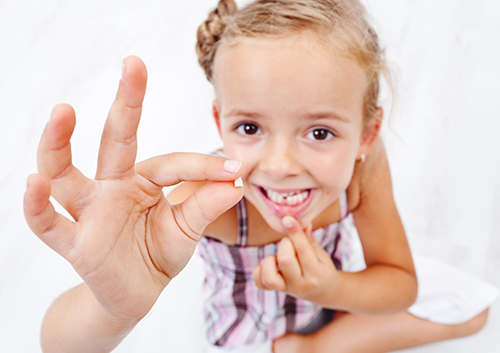August 18th, 2021

Have you ever wondered why some people have dull and yellow teeth, while others have bright, white smiles? It’s not luck.
Everyone’s teeth naturally dull over time because of aging and the contact our teeth experience with staining foods, such as chocolate and coffee. However, teeth-whitening treatments can give you the whiter smile you’ve been after.
Get Regular Treatments
Unfortunately, the effects of teeth-whitening or bleaching treatments are only temporary, but regular treatments at Oak Grove Dentistry can help keep your teeth white for much longer.
The effects of in-office bleaching can last for several months to a year, so you may prefer to repeat your use of at-home bleaching kits every few months to maintain your white teeth. Whitening toothpastes do not contain bleach and are safe to use every day.
Have Realistic Expectations
Not everyone’s teeth can be turned bright white. Some just don’t respond to whitening treatments. If your teeth are a light yellowish color, they may readily respond to teeth-whitening procedures, but bleach will not likely work on grayish teeth. Brownish teeth tend to fall somewhere in between.
Practice Good Oral Hygiene
For the best whitening results, it’s necessary to keep your teeth in good health. Visible fillings, implants, or bridges that are metallic stand out against the white color you’ll want to achieve.
Maintaining good oral hygiene will help you avoid tooth decay and keep your smile bright. In addition to brushing your teeth twice a day, these actions can help promote a healthy mouth:
- Floss every day
- Visit our Green Bay office every six months for professional cleanings
- Rinse your mouth with water after each meal and snack
- Limit sugary and starchy foods and beverages that can stain teeth, especially between meals
August 11th, 2021

HPV, or human papillomavirus, is the most common sexually transmitted infection in the country. There are over 100 strains of HPV, and, while most of these infections leave our systems on their own with no long-term ill effects, some cancers have been linked to certain “high risk” strains of the virus. One of these strains, HPV16, increases the risk of oral cancer.
HPV-related oral cancer most often appears in the oropharynx. This area of the mouth includes:
- The base, or back, of the tongue
- The soft palate
- The tonsils
- The back and sides of the throat
While HPV-related oral cancers can appear in other parts of the oral cavity, they most typically occur at the back of the throat and tongue and near the folds of the tonsils. Because of this location, oropharyngeal cancer can be difficult to detect. This is one more important reason to maintain a regular schedule of dental exams. Our examination doesn’t focus only on your teeth and gums. We are trained to look for cancerous and pre-cancerous conditions in the mouth, head, and neck to make sure you have the earliest treatment options should they be needed.
If you discover any potential symptoms of oropharyngeal cancer, call us for a check-up. These symptoms can include:
- Trouble moving the tongue
- Trouble swallowing, speaking, or chewing
- Trouble opening the mouth completely
- A red or white patch on the tongue or the lining of the mouth
- A lump in the throat, neck, or tongue
- A persistent sore throat
- Ear pain
- Unexplained weight loss
- Coughing up blood
Not every symptom is caused by cancer, but it is always best to be proactive. HPV-related oral cancer is rare, but it is on the increase. While HPV-positive oral cancers generally have a better prognosis than HPV-negative oral cancers, early diagnosis and treatment are still essential for the best possible outcome.
Finally, if you are a young adult or have an adolescent child, talk to our doctors and to your doctor about the HPV vaccine, which is effective before exposure to the virus occurs. Most HPV vaccines, while not designed specifically to prevent oral cancer, prevent the HPV16 strain from infecting the body—the very same strain that causes the majority of HPV-related oral cancers. Although no studies have shown definitive proof yet, there is strong feeling in the scientific community that these immunizations might protect against HPV-positive oral cancer as well as cervical, vaginal, and other cancers. It’s a discussion worth having at your next visit to our Green Bay office.
August 4th, 2021

It’s common for children to suck their thumb at a young age. our doctors and our team want you to understand the potential issues that can surface down the road if the habit isn’t broken early on.
It’s normal for infants to explore the function of their mouths by putting objects like their thumbs inside it. You shouldn’t be concerned if your baby regularly sucks his or her thumb. For infants who are still growing their baby teeth, thumb sucking can help with stimulating growth and development of their baby teeth.
Thumb sucking is not a problem among infants because they generally do it to sooth and comfort themselves. Problems can occur of kids continue the habit when their baby teeth begin to fall out, around six years of age.
If you have a young child whose adult teeth are starting to come in, that’s when thumb sucking can start to be a problem. Most children stop thumb sucking between the ages of two and three years. According to the American Dental Association, if thumb sucking continues as adult teeth come in, this can lead to problems involving improper alignment of teeth and growth of the jaw, gums, and roof of the mouth.
It may also affect your child’s speech after that, by causing a lisp or other speech impediments. As a parent, you may need to begin to regulate and intervene if thumb sucking starts to become a bigger problem for your child.
How to Stop Thumb Sucking
- Provide comfort to your child if thumb sucking happens when he or she is anxious.
- Limit thumb sucking initially to bedtime or naptime.
- Employ positive reinforcement for good behavior.
- Talk with your child about the potential problems that come from this habit.
- Distract your son or daughter with activities such as fun games any time you notice it starting.
- Involve your little one in choosing methods for stopping, like positive rewards.
- Have our doctors talk to your child to reinforce concerns about thumb sucking.
Don’t forget that thumb sucking is a common habit that many children indulge in, and it should not be a concern right away. If you’re worried about your child’s thumb-sucking habit, start to address the issue as soon as possible.
The above techniques can help to reduce the amount of time your child sucks a thumb. our doctors and our team are here to help you if you have any questions or concerns about this habit.
Feel free to call our Green Bay office and we will be happy to help you and your child.
July 28th, 2021

While the last baby teeth generally aren’t lost until age ten or 11, most children stop believing in the tooth fairy by the time they're seven or eight. Of course, children are more than happy to play along with the game when there’s money at stake! While it is impossible to know what the tooth fairy does with all those teeth (are they labeled and stored like museum pieces in a giant fairytale castle?), it is possible to trace the history and myth of the tooth fairy to several cultures and traditions. our doctors and our team learned about some interesting myths about the tooth fairy!
The Middle Ages
Legend has it that Europeans in the Middle Ages believed a witch could curse someone by using their teeth, so it was important to dispose of baby teeth correctly. Teeth were swallowed, buried, or burned. Sometimes baby teeth were even left for rodents to eat. Despite being pests, rodents were valued for their strong teeth; it was generally believed a tooth fed to a rodent would lead to the development of a healthy and strong adult tooth.
Eighteenth Century France
The tooth fairy myth began to show more characteristics of a conventional fairytale in 18th century France. La Bonne Petite Souris, a bedtime story, tells the strange tale of a fairy that changes into a mouse to help a good queen defeat an evil king. The mouse secretly hides under the evil king’s pillow and defeats him by knocking out his teeth.
Scandinavian Lore
So, why does the tooth fairy leave money under the pillow? The idea of exchanging a tooth for coins originated in Scandinavia. Vikings paid children for a lost tooth. Teeth were worn on necklaces as good luck charms in battle. While the idea of exchanging a tooth for coins quickly spread throughout the rest of Europe, a fierce, horn-helmeted Viking is far cry from the image of a fairy collecting teeth.
While the tooth fairy as children know her today didn’t make an appearance until the 1900s, tooth myths and rites of passage have existed in numerous cultures since the dawn of time.





 Website Powered by Sesame
24-7™
Website Powered by Sesame
24-7™